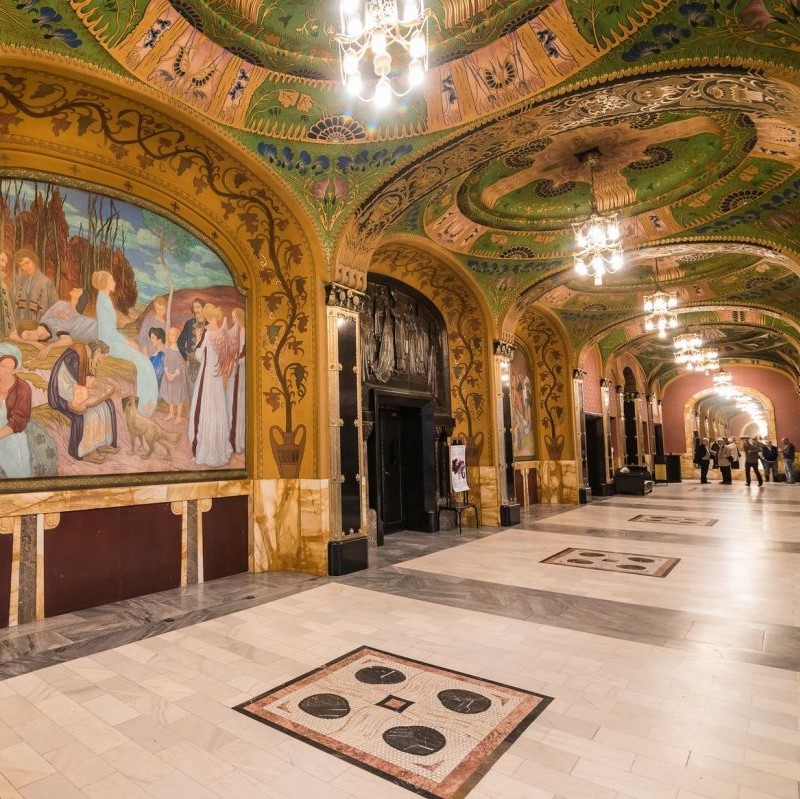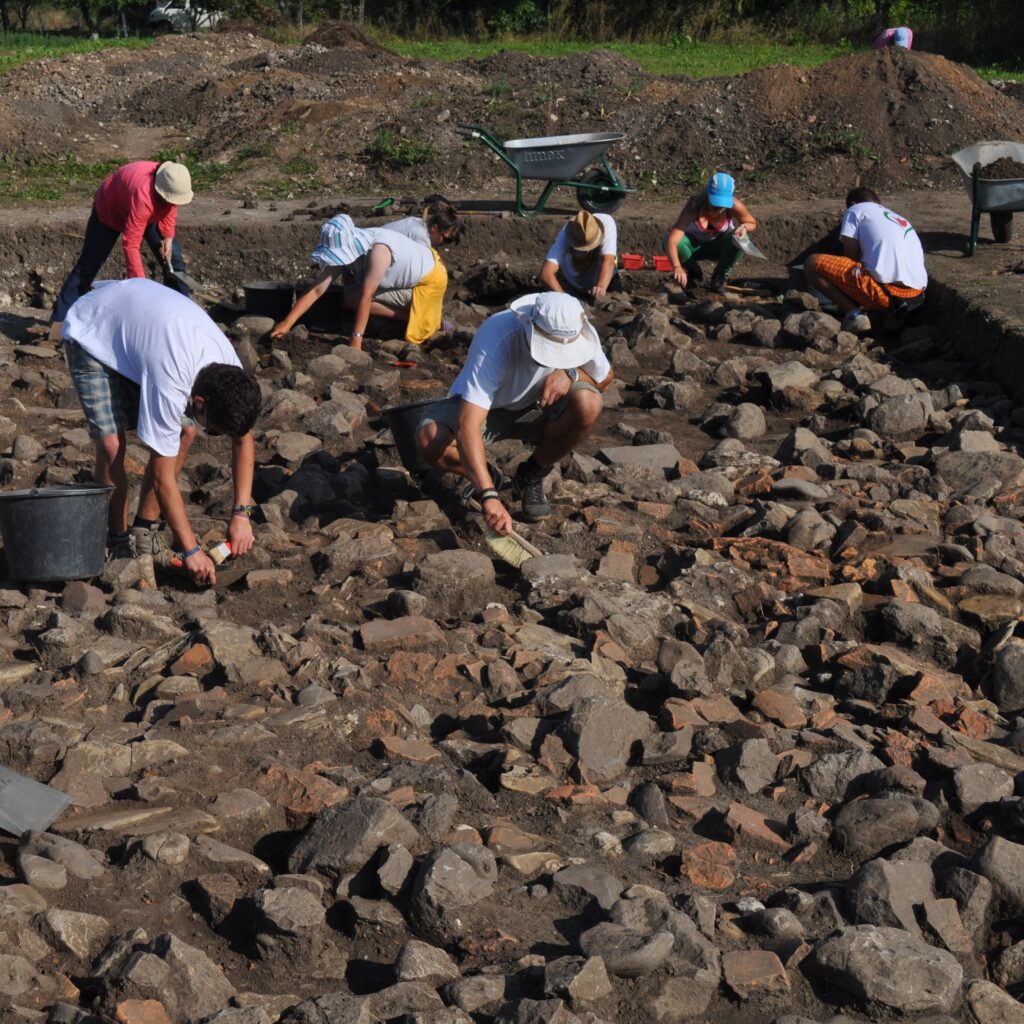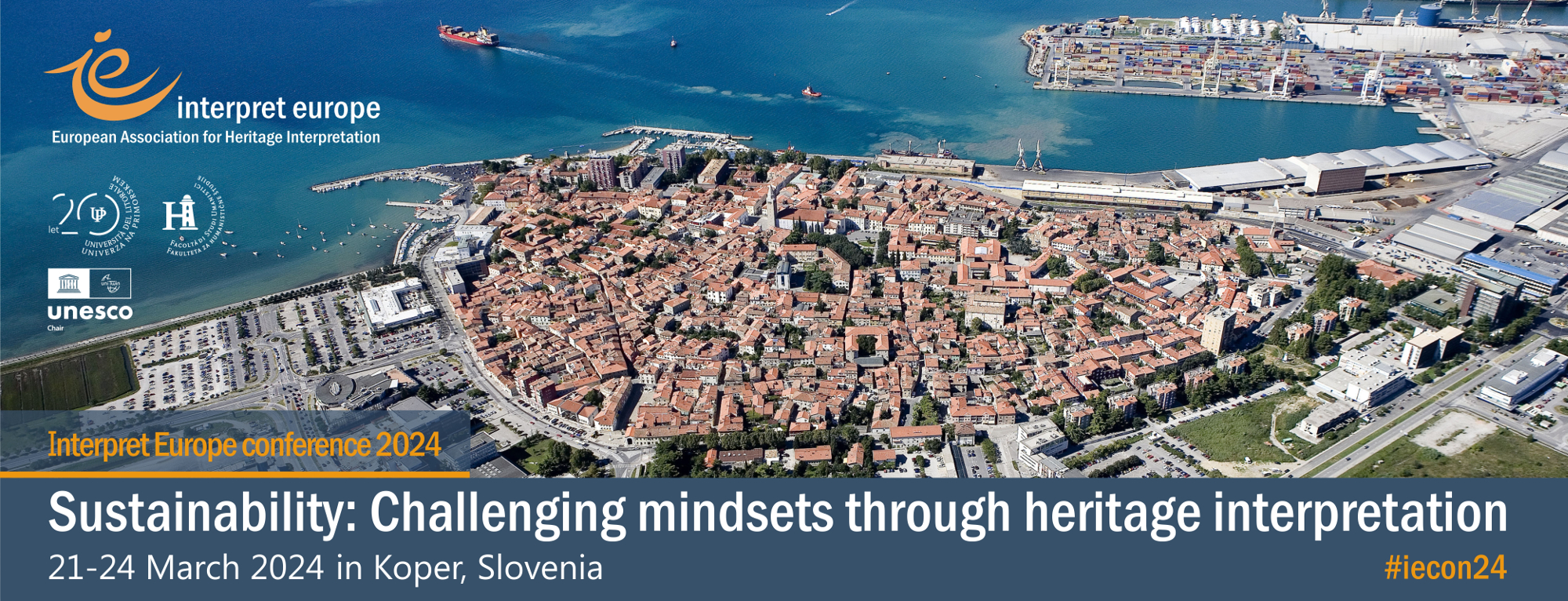Study visits, Friday, 22 March
Option 1:
Of white and black gold – Sečovlje Saltpans
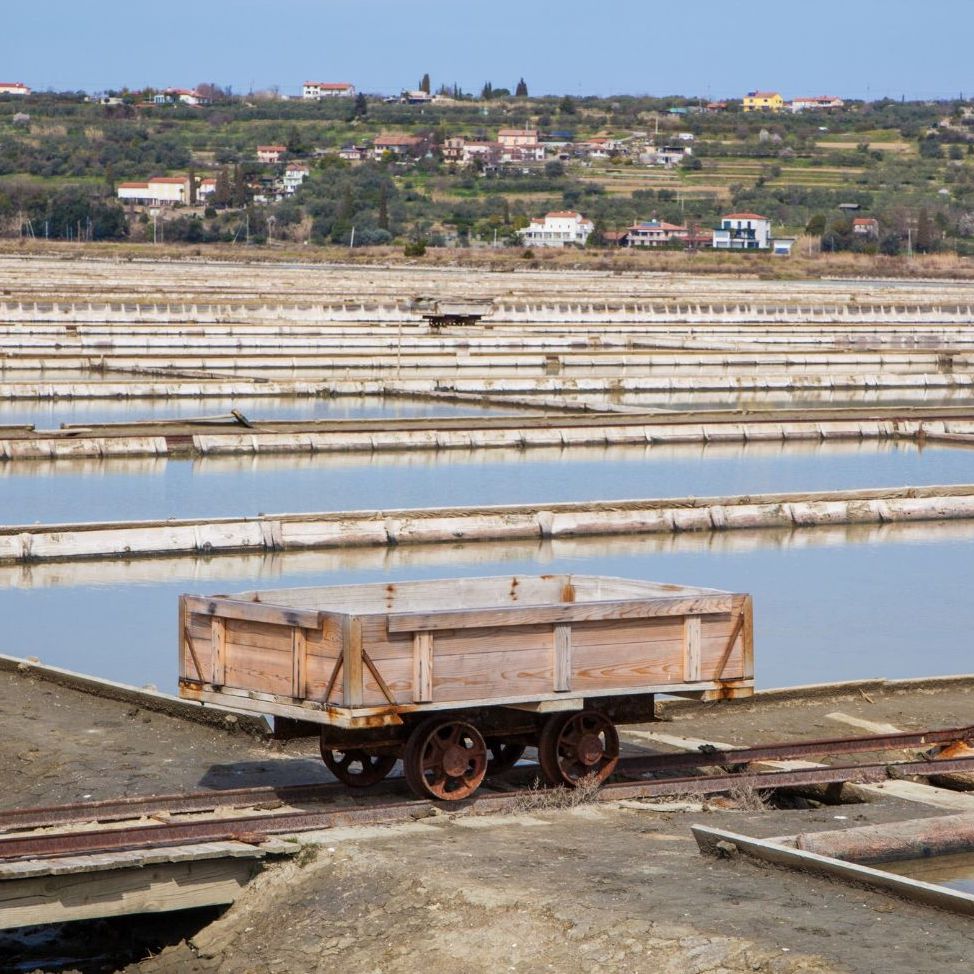
Close to the current and often contested border between Slovenia and Croatia, the saltpans of Sečovlje/Sicciole present a different picture from the urban area. This cultural landscape is protected as a cultural monument as well as a natural site of national importance and has marked the Istrian coastal land for the last 700 years and more. This large site of salt production was historically only one among several
in the north Istrian region but today it is only one of two surviving. It has many characteristics from different points of view as heritage. The area is divided into two separate parts, in which one, Lera, is still
active and where the modernised way of salt production is still carried out. The southern part, Fontanigge, embraces the historic, non-functioning, part where only demonstrations of a 700-year-old technique of collecting salt is performed. Here, a small museum of saltpans is located inside a few reconstructed salt-pan workers’ houses while the active part and interpretation centre present the current practice as well as the saltpans as a specific site. In fact, the whole area is protected primarily as a natural park. Presented, yet not exalted, is another, now invisible, layer of the landscape: beneath the surface where the ‘white gold’ (salt) is produced, lie the abandoned tunnels of the former ‘black gold’ coal mine. The latter existed from the 1930s until the end of the 1960s and clearly marked the economic and social landscape of the area. The few remains of the built structures of the mine stand as ruins awaiting protection, preservation and interpretation. This is a wonderful case for a joint brainstorming session among experts in interpretation!
Travel time by bus: 25 min (one way)
Walk: short hike through the saline
Option 2:
The land of wild beasts and lakes – Pivka
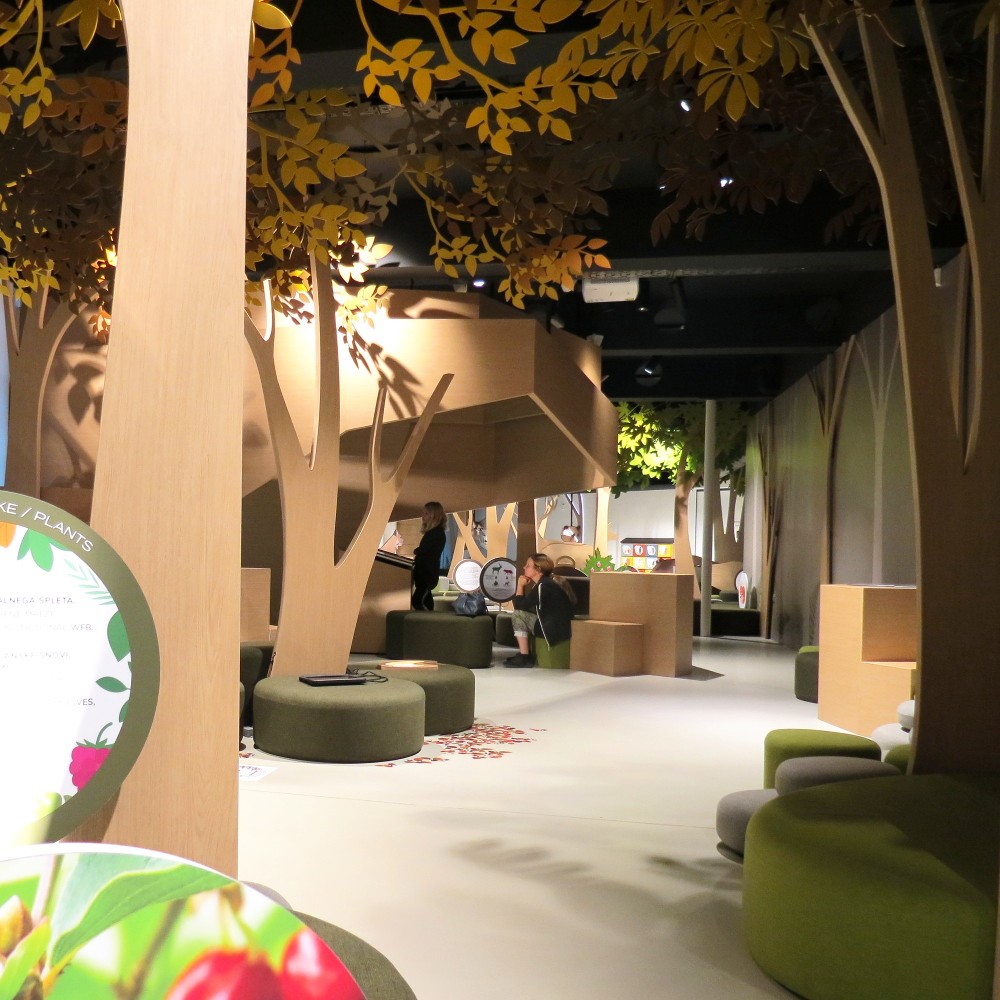
Dangerous or cute? Worthy of protection or extinction?
The Dinaric Mountain Range is one of the most extensive forested areas in Europe and has an enormous value in its biodiversity. It is home to all three European wild carnivores: bear, wolf and lynx. A century ago, all three species were either extinct or almost exterminated. Nowadays, they are protected by law. However, people living beside them hold often conflicting opinions that vary from deeply ingrained fear to romantic sympathies with animals. Stock breeders, hunters, recreationalists, government, wildlife conservationists… how do you find common ground among them? DINA Visitor Centre is trying to do just that by mediating in multiperspectivity and respecting all sides while giving voices to animals too. We’ll talk with the authors about all these aspects and how they try to assure longevity and resilience of interpretive provisions.
The land of disappearing lakes
Imagine being a plant that is sometimes drying from heat and at other times, is flooded to its knees. Life with and around water that is coming and going has shaped a plant and animal world as well as culture. The Ekomuseum of Pivka‘s intermittent lakes is one of the first interpretive museums in Slovenia and will reopen with renewed interpretive services shortly before our visit. We’ll talk with the authors and managers about the challenges and thrills of community co-creation.
Travel time by bus: 50 min (one way)
Walk: visits of visitor centres accessible for disabled
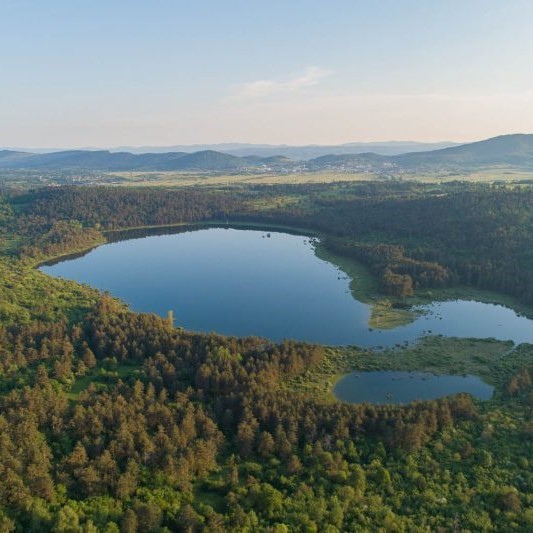
Option 3:
Daily life in a windy city – Trieste
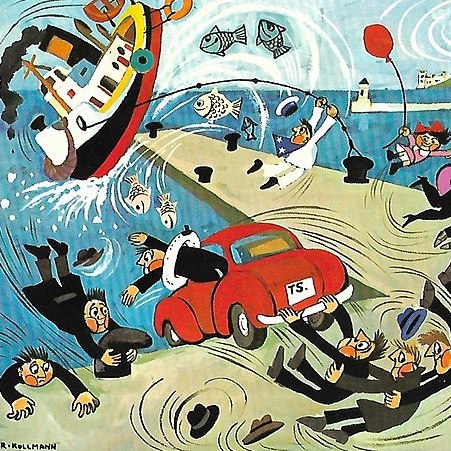
Unpredictable and wild, it regularly whirls the entire city into chaos: the Bora, a wind named after the daughter of the wind god.
For scientists, it is just cold and heavy air from the east which falls down from the Karst range to reach the warm sea. For the people, it is powerful and even violent, but at the same time Triestins love their Bora. You can try to fight the forces of nature or you can make your peace with them.
Our guide Sabina will take us through the heart of Trieste to the small and unique Bora museum. We will discover the (hidden) heritage from people who had to deal with Bora and were inspired by her, as well as traces of the Bora wind itself. Does the Bora not only impact outdoor life and buildings, but also the mindsets of Triestins?
Could an interpretation of the manifold ways in which local people relate to a local wind system inspire participants to reflect upon sustainability and challenge their own mindsets?
“Built on caffeine”
Trieste is not only the city of the wind and sea but a melting pot of diverse cultures and influences. From its origins as a Roman port to its role as a major trading centre for the Austro-Hungarian Empire it’s still the home of the Mediterranean’s biggest coffee port.
Therefore, we can’t possibly visit the city without a good cup of coffee in one of the authentic cafés. We’ll end the day with a traditional Triestine dinner.
Travel time by bus: 30 min (one way)
Walk: guided tour in the city
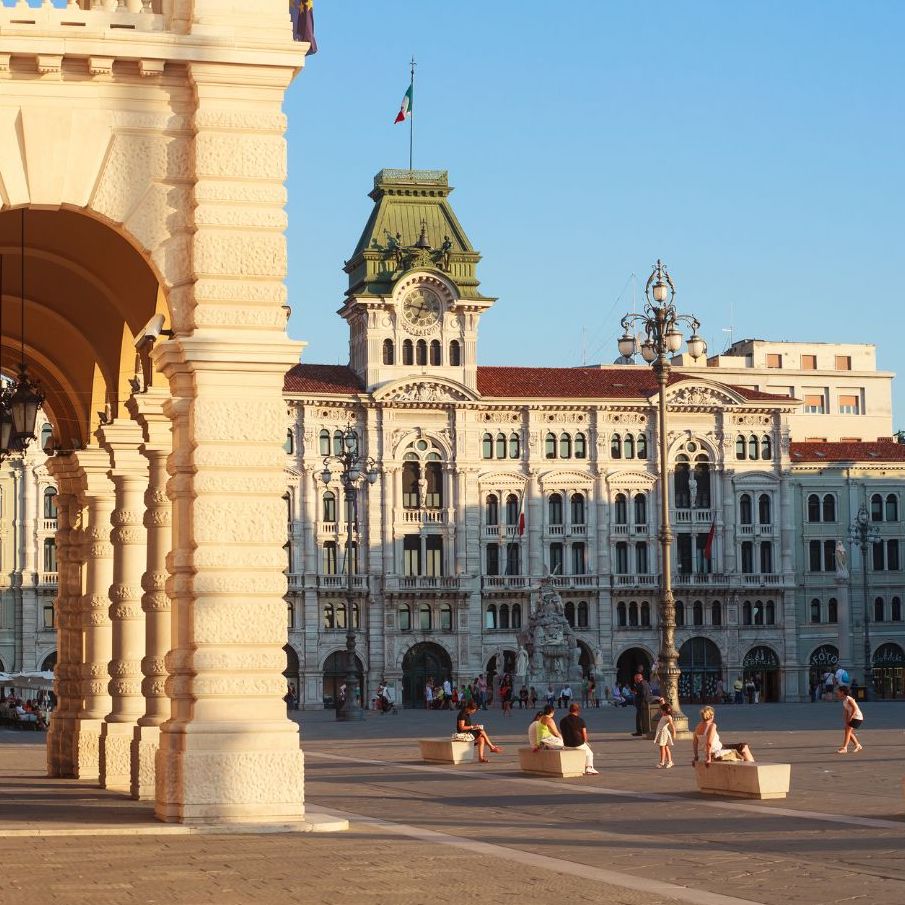
Option 4:
Of noble folk and fisher folk – Morosini Grimani Castle and Rovinj Ecomuseum Batana
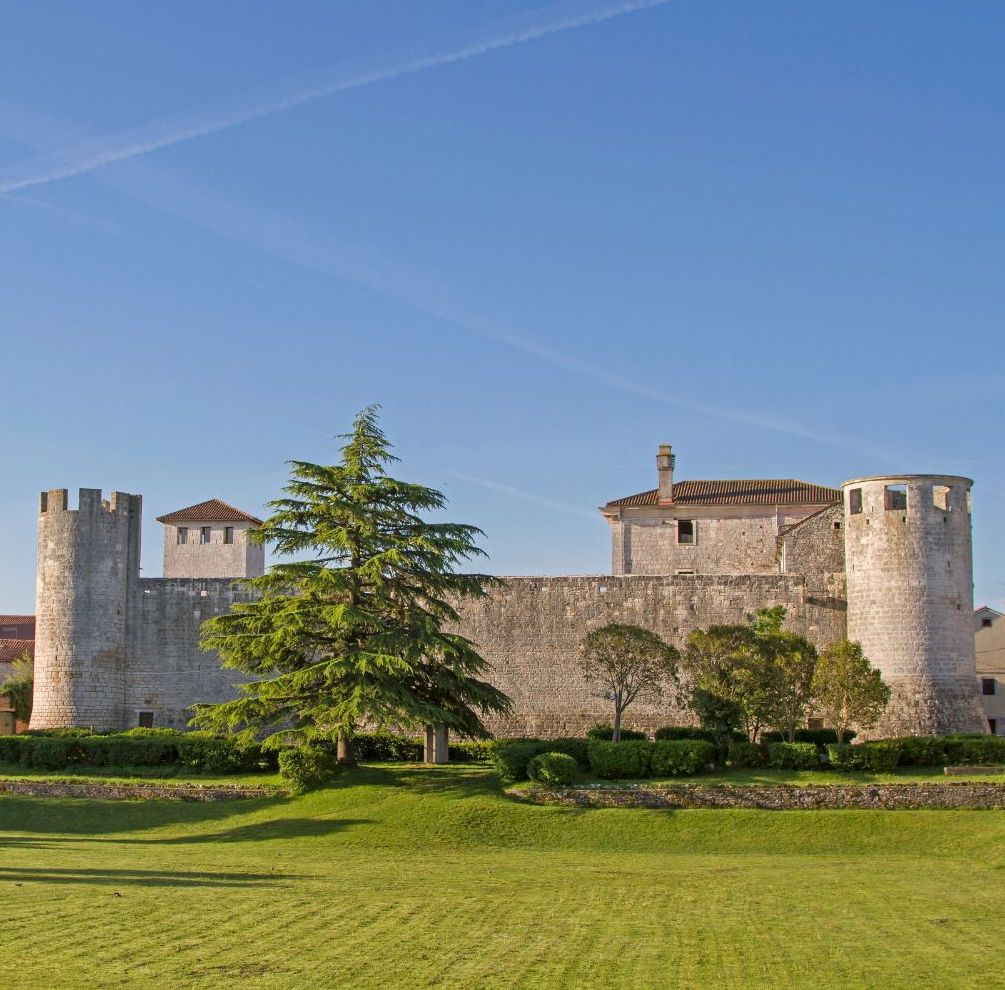
Morosini Grimani Castle, located in the rural town of Svetvinčenat, with its rich history, has been the source of stories that have been told, re-lived and passed down through the generations. Its restoration was completed in 2020 and was planned and carried out with the involvement and impact on local communities in mind, making the castle a catalyst of social and economic development. Today, the castle is fully renovated and supports local craftsmen and producers, celebrates traditions and unites communities.
The castle’s development addresses the well-being and quality of life of present and future generations. It seeks to create access to resources, opportunities and a higher standard of living for the communities. What about the environmental aspect of sustainability? Could this example challenge our mindsets about the trade-off between economic, social and environmental aspects of sustainable development?
Rovinj’s Batana Eco- Museum’s mission is to raise awareness about the significance of the batana, the fishing boat used for many past generations, and preserve the knowledge of how this traditional boat is built. It places a strong focus on promoting innovative cultural tourism and actively engaging local communities. These key tasks are designed to strengthen the cultural competency of communities and ensure sustainable development.
Furthermore, the Eco- Museum is considered an essential component of the intercultural dialogue connecting Rovinj’s community networks with the broader family of traditional vessels and their related communities across the Adriatic and Mediterranean. It is listed in the UNESCO Register of Good Safeguarding Practices for the preservation of the intangible cultural heritage of the world.
We’ll meet the fishermen that are the keepers of the knowledge and traditions related to the batana . Are all the fishing practices of today less sustainable than the ones from the past? Could knowledge of the evolution of the man-sea relationship until today challenge the local fishermen’s mindsets and our own mindsets while building the man-sea relationship of the future?
We’ll end the day with a traditional fishermen’s dinner in the Spacio – in the Rovinj dialect, spàcio – a local version of a tavern or wine cellar where the people of Rovinj keep, taste, and sell wine. However, it is also a place for socialising, eating, playing cards, singing and entertainment.
Travel time by bus: about 1 hour (one way)
Walk: walk through the city of Rovinj including steep streets and stairs.

Study visits, Saturday, 23 March
Option 1:
Mysterious and vulnerable landscape – Škocjan caves

Join us in discovering one of the most interesting, mysterious and vulnerable landscapes in the world, the karst landscape. Ranking among the most important caves in the world, the Škocjan Caves represent the most significant underground phenomenon in both the Karst region and Slovenia.
As long as three millennia ago, people have been attracted to the gorge where the Reka River disappears underground as well as to the mysterious cave entrances. It gave Škocjan a great symbolic spiritual power and transformed it into a significant cult centre.
Due to their exceptional significance, the Škocjan Caves were entered on UNESCO’s list of natural and cultural world heritage sites in 1986. In this way, international scientific circles have acknowledged the importance of the caves as one of the natural treasures of planet Earth.
Collapse dolines (where cave ceilings have fallen and left depressions) and their surroundings are home to rare and endangered birds and several bat species. Due to particular geomorphological and microclimatic conditions, an extraordinary ecosystem has developed here. Rare cave fauna are preserved in the underground system of the Reka River.
Travel time by bus: 30 min (one way)
This guided walk through the caves lasts between two and a half and three hours and covers about five kilometres. 1000 steps are involved.Essential equipment includes comfortable and warm clothing and suitable footwear (rubber boots or hiking boots), a head cover and enough water. In case of rain bring an umbrella, as part of the path is above ground.
Comfortable and warm clothing and suitable footwear (rubber boots or hiking boots), a head cover and enough water. In case of rain have an umbrella, as part of the path passes over the surface.
Option 2:
Contested heritage – Koper/Capodistria
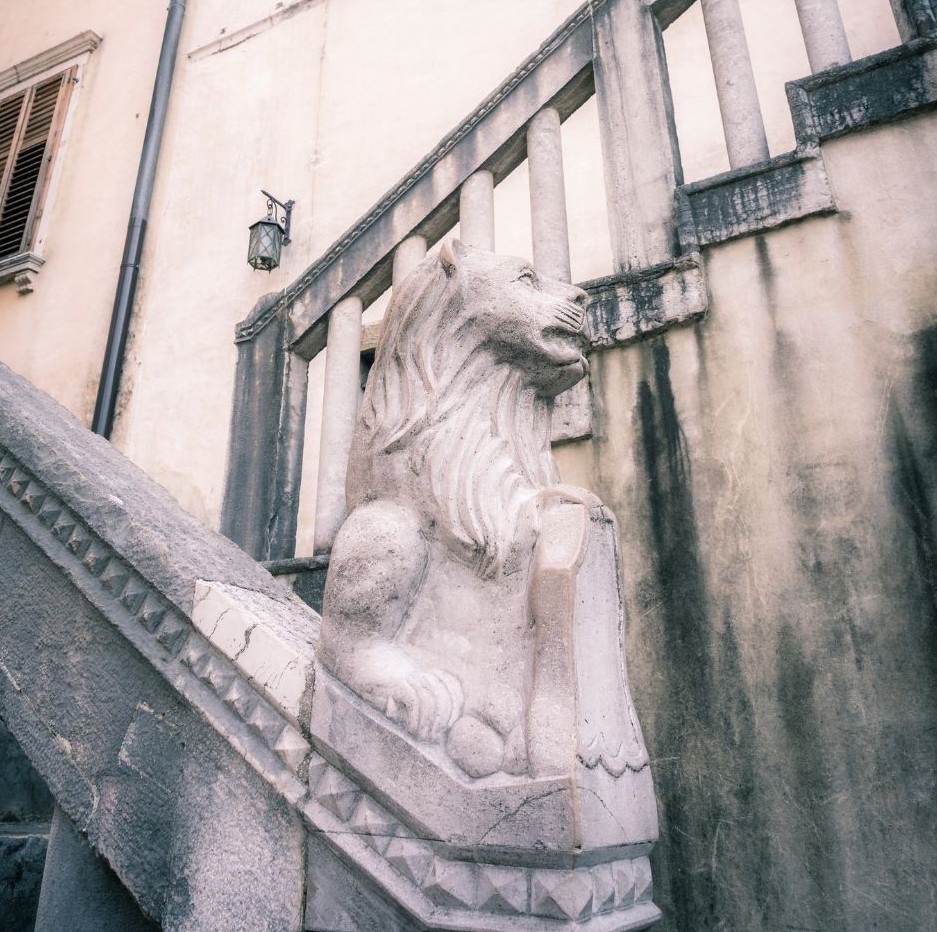
The charming historic core of the present port city of Koper/Capodistria is a palimpsest of memories, urban legends and stories, but also of forgotten and erased history. This makes it a challenging case for storytelling about the consonant and dissonant heritages in the city, in the country and in the region.
The former fortified city on an island is hidden in the modern town that has grown rapidly since the end of WWII. Yet, picturesque Venetian Gothic and Baroque facades of palaces and churches still recall its majestic history as Capo d’Istria, or ‘Head of Istria’, while tiny details of finely forged ironwork in windows and gates recall the Austrian period. Winding stone-paved streets end in tiny squares that once hosted the paolani, or urban farmers, today host local bars of the multicultural post-Yugoslav, yet still Slovenian-Italian bilingual population. Prominent high-rise housing of socialism are markers of periods of intense social, economic, and political change. Today, the vibrant life of the town is marked by the presence of university students from all over the world.
The intertwining, while conflicting immovable, movable and intangible, heritage of this palimpsests of the history of Koper/Capodistria can serve as a textbook case for the challenges of interpretation.
The guided walk takes between one-and-a-half and two hours.
Option 3:
On the intangible paths of the Mythical Park Rodik
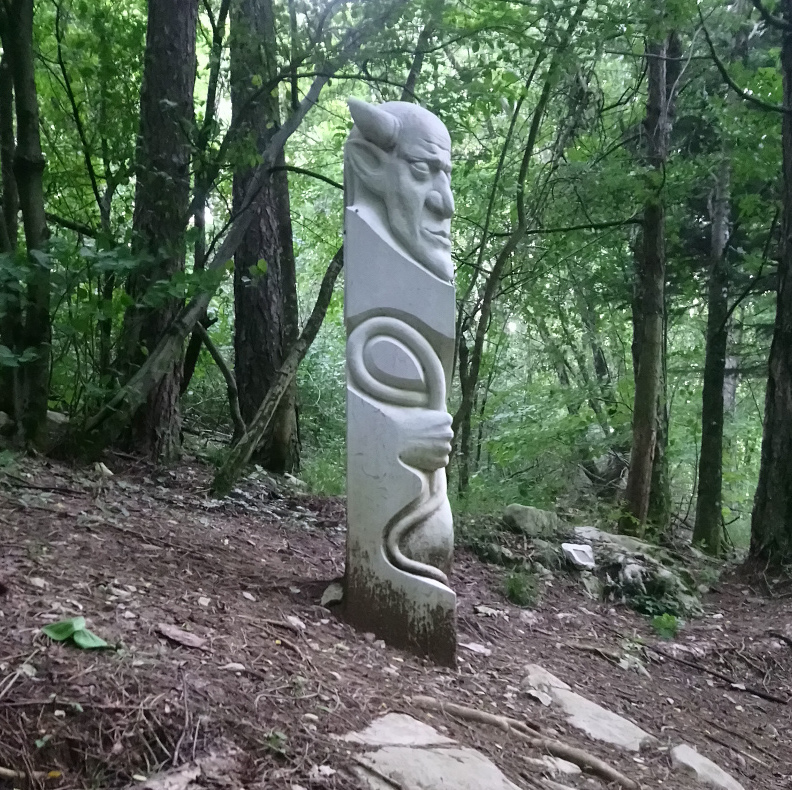
If you would like to get immersed in a wonderful dense forest inhabited by mythical beings and experience different world views, you are welcome at the Mythical Park of Rodik.
The exhibition ‘Mythical and other realities’ will make you reflect on different perceptions of the world coexisting , from science to religion / mythology to art. The Western perception is today dominated by the scientific view but this position is turned upside down here. It’s the mythical perception that dominates the exhibition where art based on geomancy enters a dialogue with science. The visitor will reflect on the polyphony of views on the key life questions of who we are, where are we and where are we going?
From the exhibition, we continue the path across the mythical landscape where the narratives are interpreted in the place of their origin, the landscape. Many narrative traditions about giants, snake cults, devils, caves as entrances to the world beyond, mythical stone Babas (called hags in English) are presented in an innovative and non-invasive way, presented by local narratives, artistic stone sculptures, interactive games etc. The tour will guide us along the path of Lintver the dragon through a dense forest to Lintver’s pre-Christian cult at the Lake on the top of the hill, to the settlement of giants, to the enigmatic Mare’s head and other delights.
The tour will make us reflect on different world perceptions, the traditional conceptualisation of space and time and the intangible everyday landscape.
Travel time by bus: 25 min (one way)
Walk:
This guided tour through the exibition and Lintver the dragon’s path takes about three hours.
Option 4:
Isolana – IZOLANA and Archaeological Park at Simon’s Bay
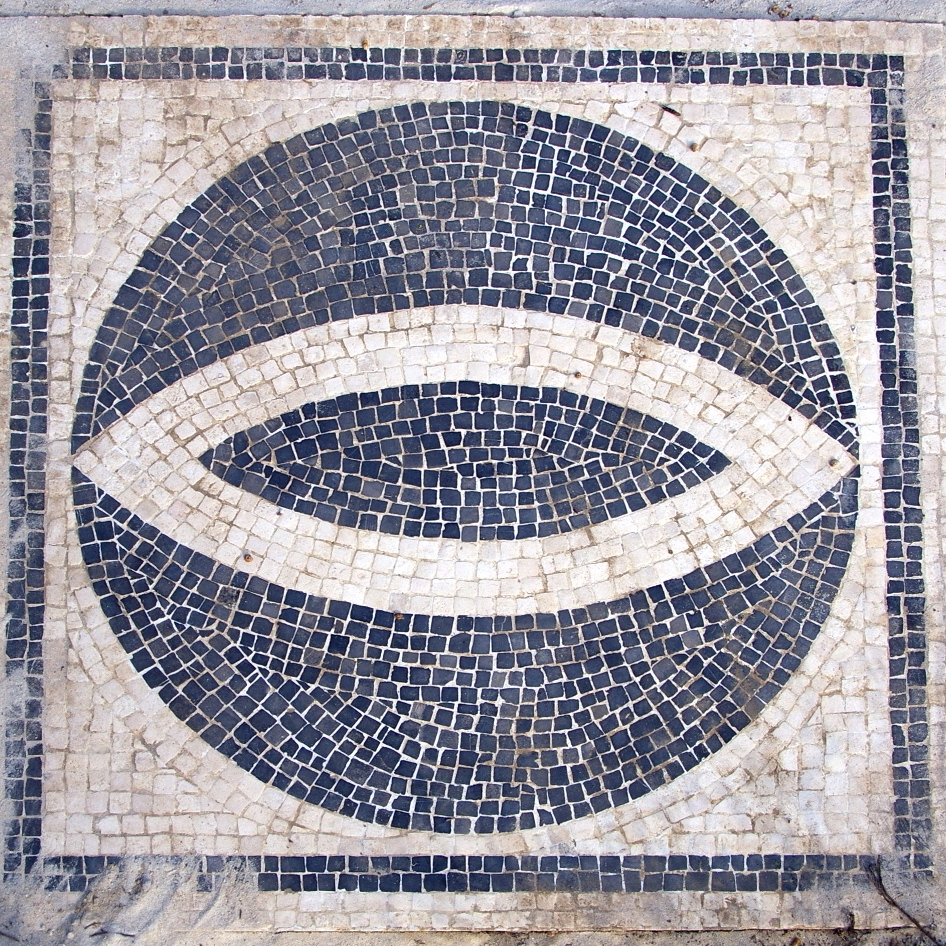
Izola, a former fishermen’s town, promises a wide range of experiences throughout the year. In Izolana – the House of the Sea you can discover the rich stories of Izola’s heritage. There are numerous ship models, a real fishing boat, a game of catching fish, a projection of the development of the former island town on a 3D model and more. The contents of the museum are interactive! Izolana is also the starting and finishing point of the adventure game, The Forgotten Secret of Izola, through which you can get to know the town and discover its history outside the museum itself. During the game, you can visit churches, squares, parks, palaces, and many other attractions that you will enjoy and in this way you will learn about a long-forgotten Izola secret.
The archaeological park at Simonov zaliv showcases the remains of a Roman seafront villa and its submerged port. Together they represent one of the largest estates in Istria. Besides the restored remains of Roman mosaics and architecture, the visitor can enjoy the interpretation centre with interactive maps that present not only Roman heritage but also the natural, geological and intangible heritage of the area. In the summer period, visitors can dive and observe the remains of the largest Roman port in this part of Istria.
Travel time by bus: 15 min (one way)
Walk: not much walk included
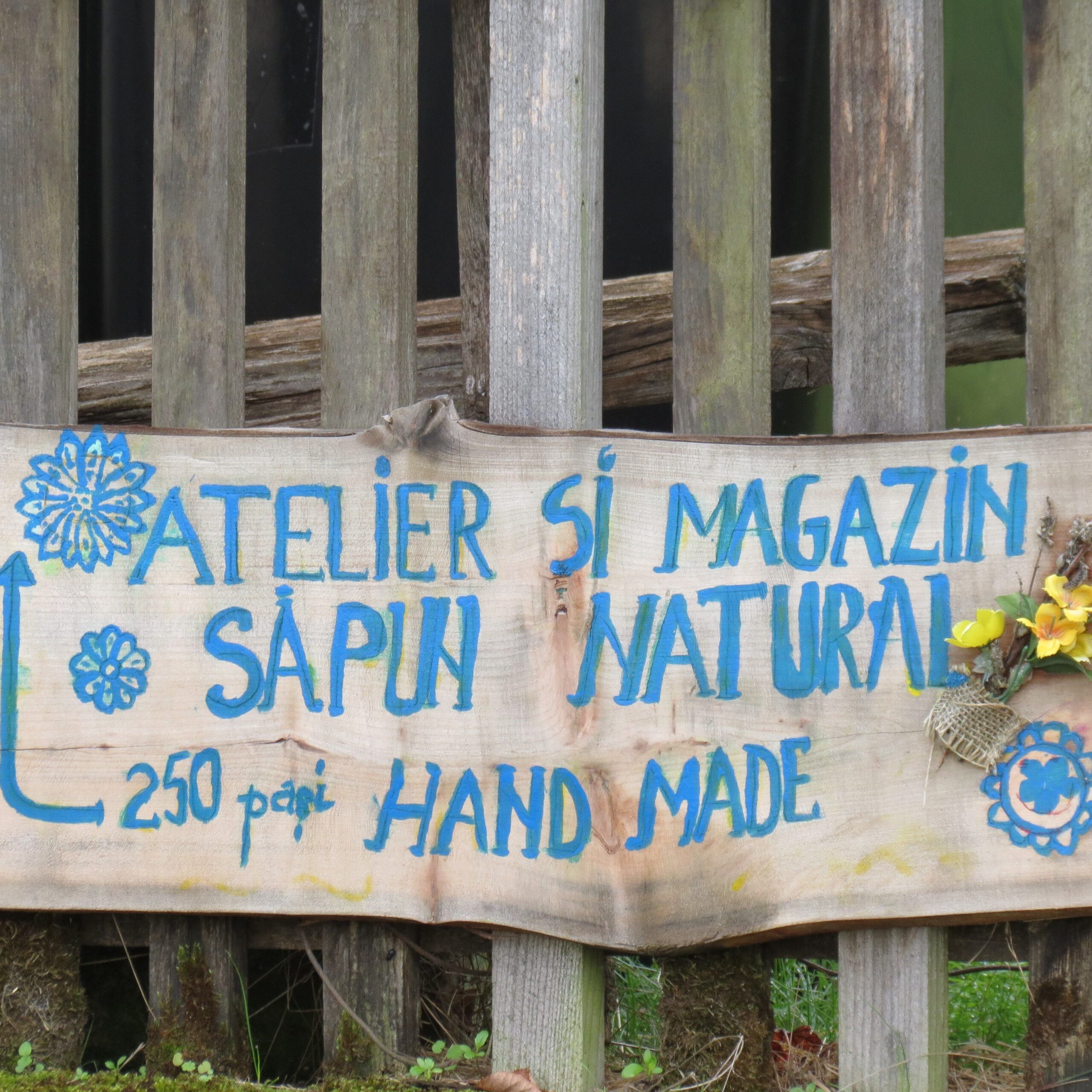
Saschiz, with its 15th-century church, is part of the World Heritage Site Villages with fortified churches in Transylvania, designated in 1999 by UNESCO. Next to the church, the ADEPT Transylvania Foundation office will welcome us in a multifunctional centre providing support for the rural communities: it’s a center for the development of local markets and eco-tourism, a consultation point for agri-environment schemes, and a grassland conservation centre. While tasting most delicious syrups, jams and other goodies produced in their processing unit, we will discuss how to give these landscapes and communities an economic future and relevance in the 21st century without sacrificing their sustainability and productivity. The agricultural system practised in Târnava Mare represents an important model of sustainable and productive agriculture at a European level. The ADEPT Foundation, founded in 2004, runs an integrated programme that links economic and social benefits to biodiversity conservation, increasing local capacity for good management in the future.
In order to immerse ourselves in local heritage and traditions, we will visit the Saschiz BLUE Ceramics Workshop. It was born from ADEPT’s desire to restore the old Saschiz ceramics center, famous for its blue colour of its products since 1700, and training young people from the Saxon Villagesarea in pottery techniques. Their goal is to revive the production of traditional local ceramics. The local potters will guide you through the sgarffito techniques that we believe were also used by local artists in the 18th century. You can enjoy a unique experience.
The Saschiz mounds, formations distinguished by their high and extremely interesting floristic biodiversity, will end our trip here. Considered by some to be pyramids, Dacian vestiges, or burial mounds erected by the Celts, they are the only natural relief forms and were created around the time of the Pleistocene-Holocene boundary (12,000 years ago) by massive landslides (glimee).
Going deeper into the Făgăraș Mountains, we will enjoy a quiet lunch at Cobor Biodiversity Farm, where Foundation Conservation Carpathia will tell us about their efforts to restore an ecosystem. The farm is a great example of how biodiversity conservation, traditional architecture and a profitable business can go hand in hand. The farm is based on the breeding of Hungarian Grey cattle for high-quality pasture-fed beef, as well as horse livery and eco-tourism. This combination allows land use with very low impact and a focus on preserving and enhancing biodiversity.
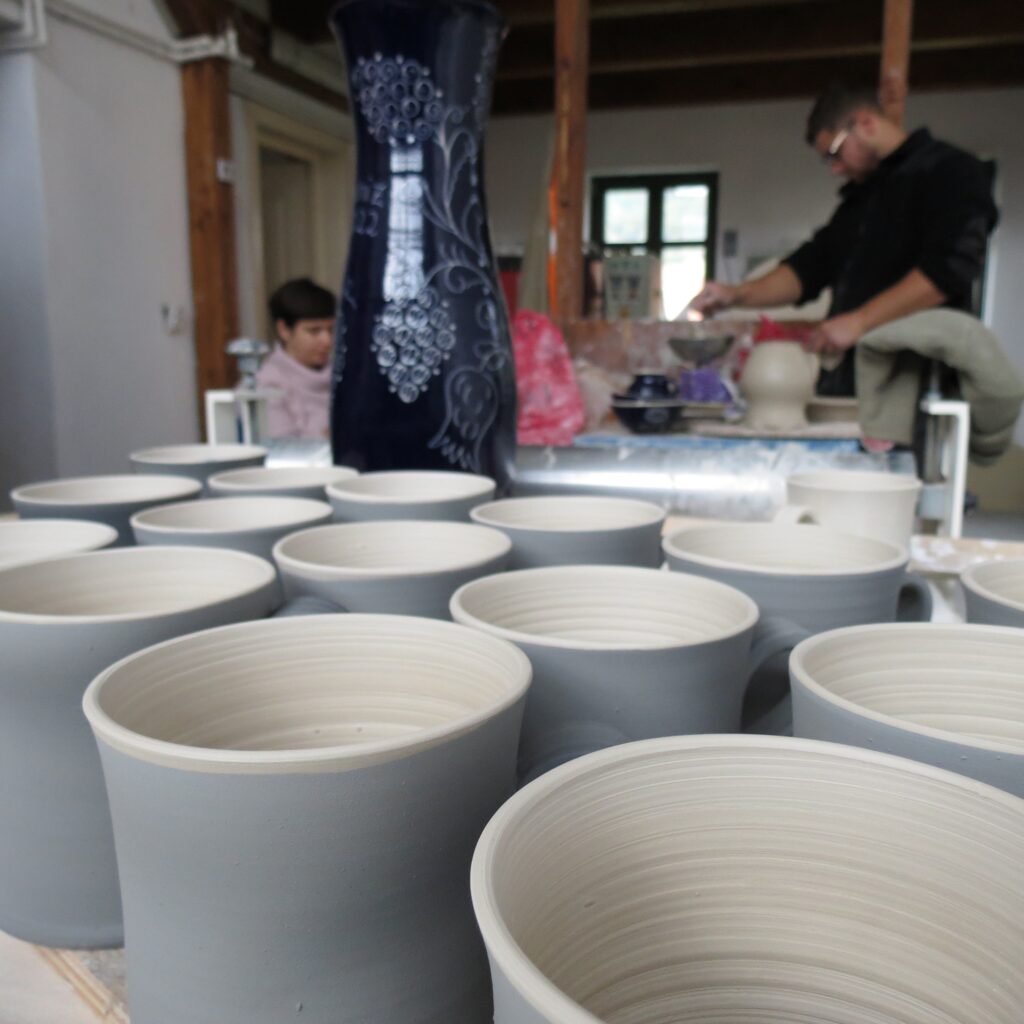
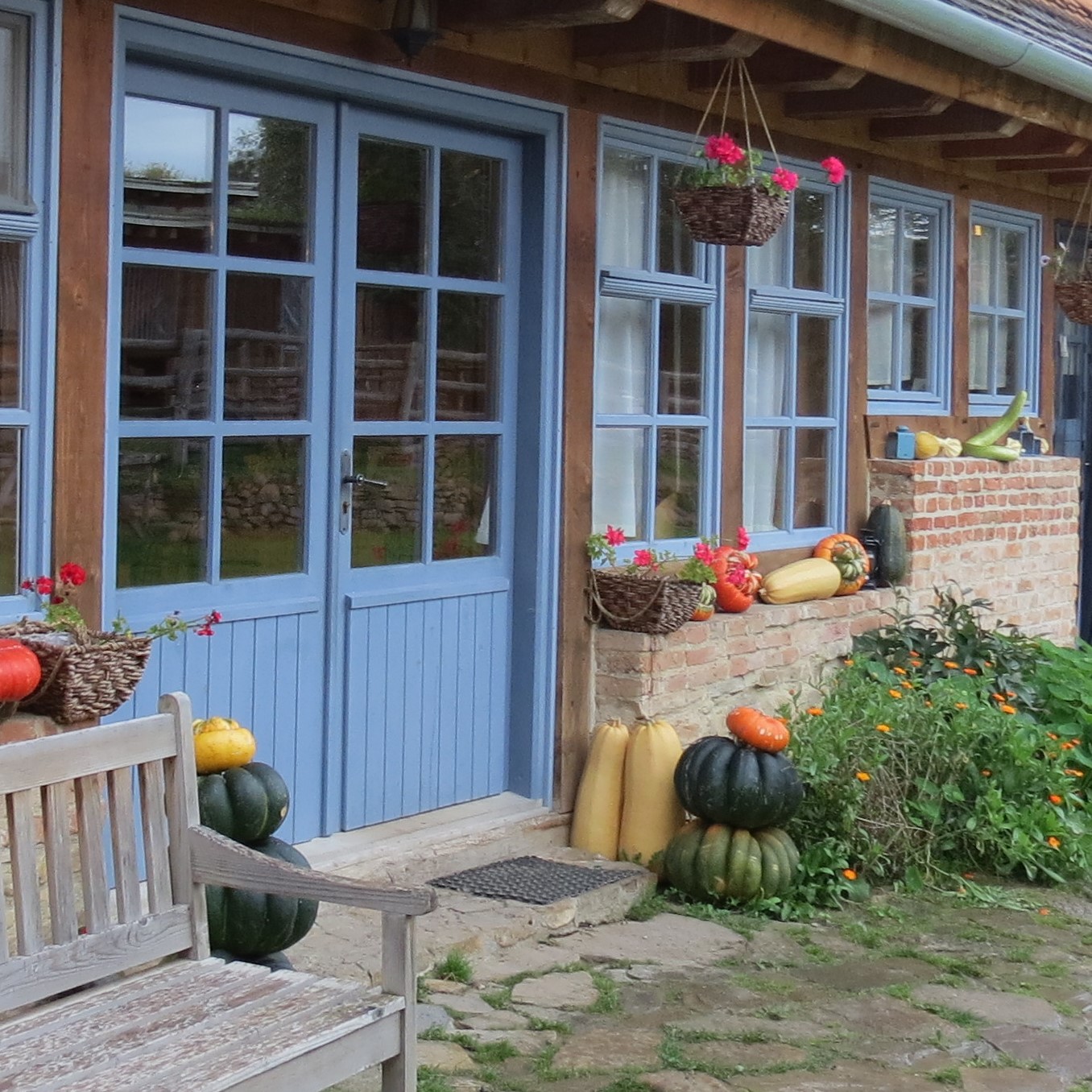
Option 2 – Viscri & Racoș Carpaterra Geoparc
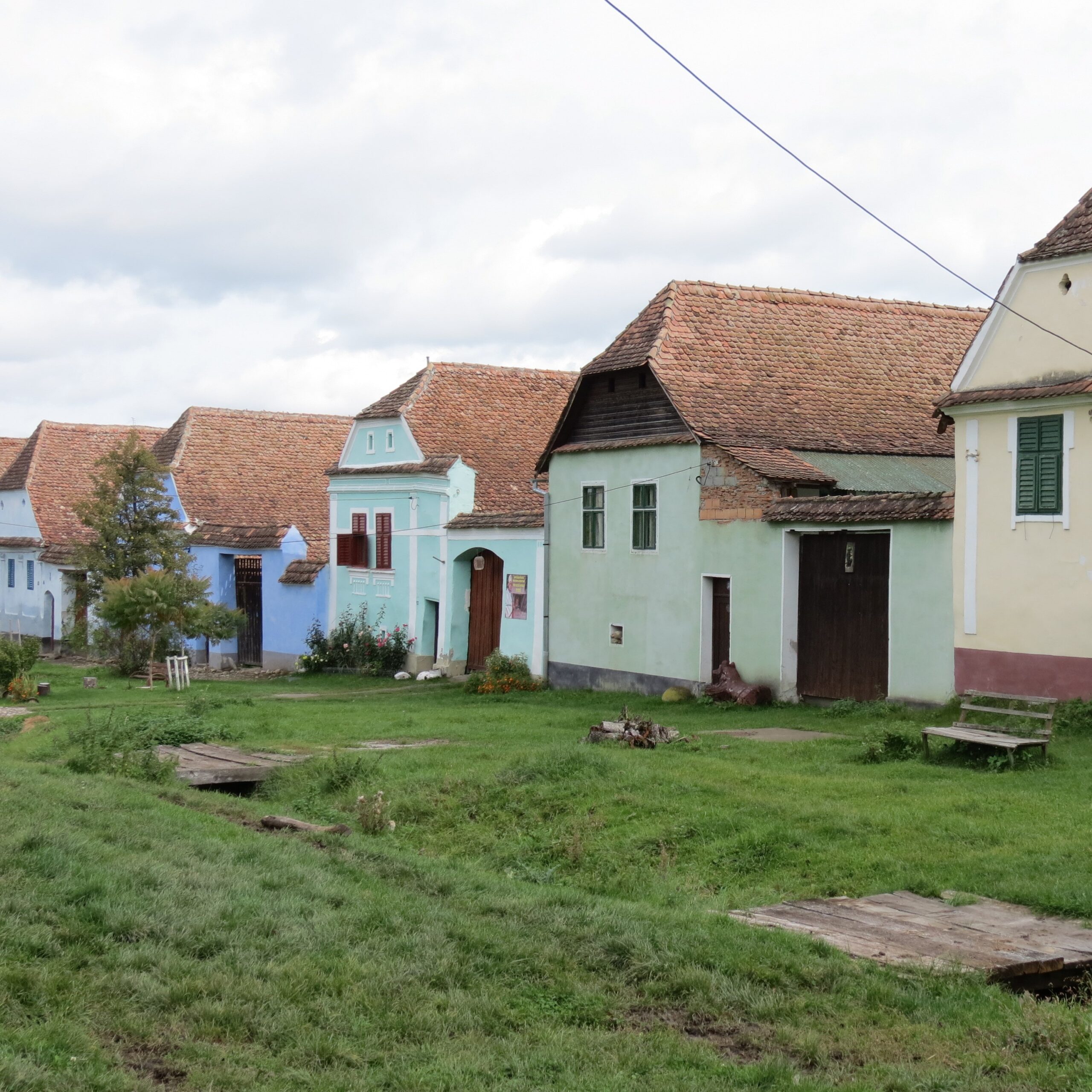
After the prolonged mass exodus of Saxons from Transylvania, in 1993 the Mihai Eminescu Trust (MET) set about highlighting the precious heritage which was under threat and embarked on saving and restoring abandoned buildings, farms
and fortified churches while keeping local crafts alive. Less than an hour away from Sighișoara, we will have our coffee in Viscri, one of the most renowned Saxon villages in Romania, part of the World Heritage Site Villages with Fortified Churches in Transylvania. Members of MET, The Whole Village Project will share with us their struggles in increasing the quality of people’s lives and maintaining the authenticity of the natural landscape of Viscri village. Their goal is supporting the development of all aspects of village life and agriculture, while safeguarding the underlying principles of conservation.
Next we will head for lunch in Carpaterra Geopark, the land of past and present volcanoes. What is the link between the aspiring UNESCO Global Geopark Carpaterra and Vienna or Budapest? If you walk on the streets of the two capitals, it is possible to step on the basalt pavement from Racoș, from the territory of this geopark. Basalt is a tough rock. It is basically hardened lava. If we had walked around these places about 1.2 million years ago, we would have seen violent volcanic eruptions and rivers of lava.
A walk through the Geological complex of Racoșul de Jos, the basalt columns, the emerald lake from the Brazi geosite, and the extinct volcano from the Hegheș Hill invites us to an incursion into the recent history of the Earth. A million years is not much compared to our planet’s age of 4.6 billion years. Here we also discover different volcanoes, which erupt even today, muddy volcanoes.
There are a lot of stories about the place and people told by the stone in the Carpaterra Geopark. They can be discovered at length in remarkable architectural monuments such as Rupea Fortress, Sukosd Bethlen Castle, the fortified Churches from Homorod and Mercheaşa.
A migratory corridor of birds completes the attractiveness of the territory. The marsh at Cotul Turzunului is one of the stopping places for birds moving from boreal areas to the Mediterranean Sea. We might meet a heron or an egret with a bit of luck.
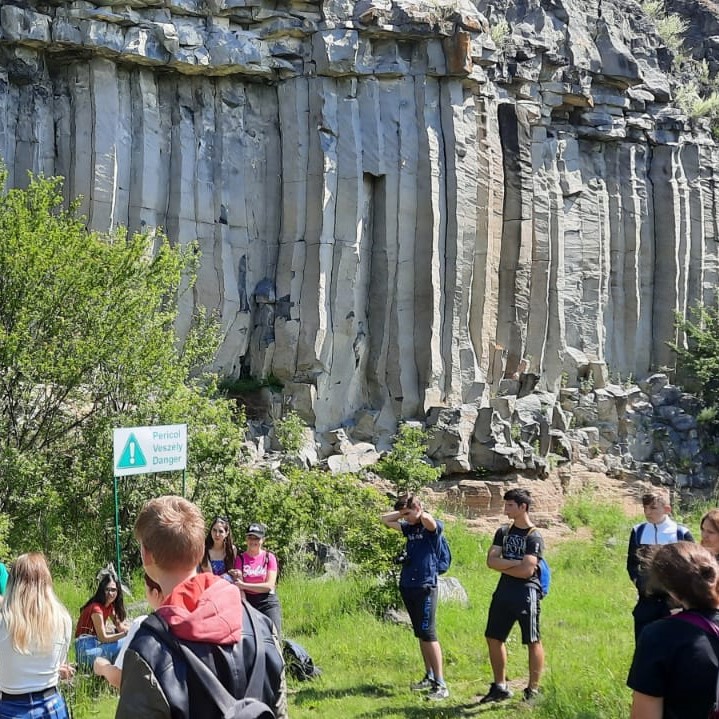
Option 3 – Breite Oak Forest, Biertan and Mălâncrav
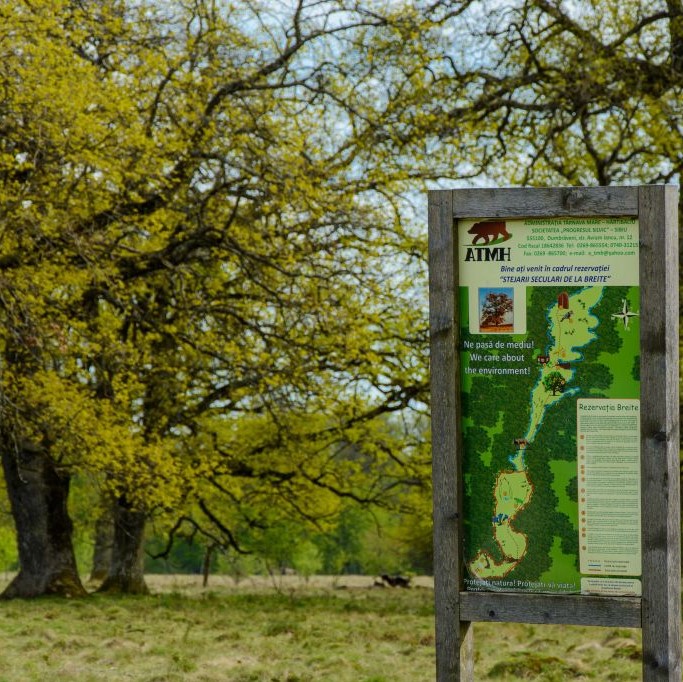
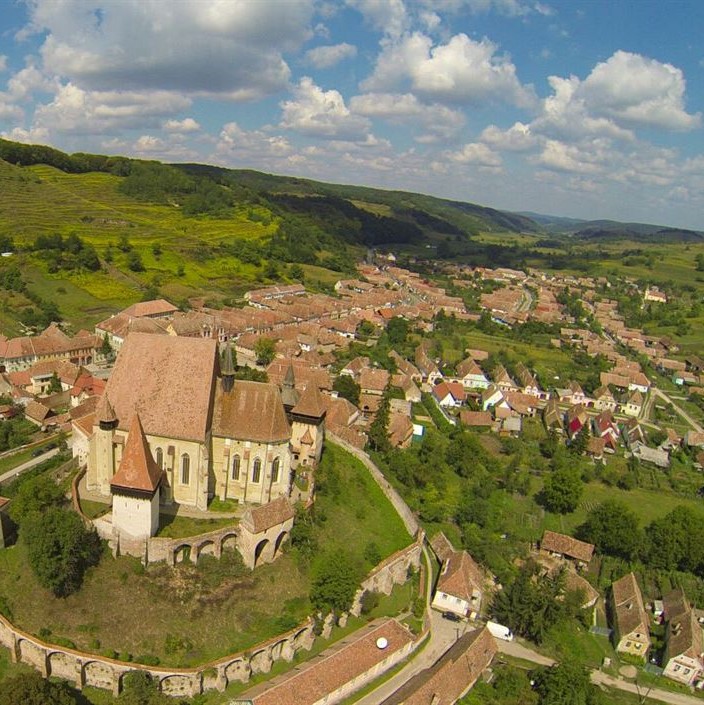
The largest grassland plateau in Europe, the Breite Reserve has attracted visitors for hundreds of years. It is commonly regarded as one of the largest, most representative and well-preserved wood-pastures with hornbeam and oak trees in Central and Eastern Europe.
After a guided tour in the ancient forest, we will head for Biertan, one of the most important Saxon villages with fortified churches in Transylvania, having been on the list of UNESCO World Heritage Sites since 1993. The Biertan fortified church was the seat of the Lutheran Evangelical Bishop in Transylvania between 1572 and 1867.
After tasting traditional food and discussing administrative challenges with town hall representatives, we will leave the hills of Biertan for the ones of Mălâncrav, where the Mihai Eminescu Trust (MET) will show a reconciliation of old and new in workshops that bring back to life once-thriving crafts: locksmithing and iron forging, masonry, joinery and metalworking, brick and tile making, painting, stucco work and carving, linen making and basket weaving. On the hills of the village there are still old fruit trees that, in addition to the fruits, provide shelter for a lot of creatures that live in a varied and harmonious ecosystem.
Option 4 – Târgu Mureș city & Călugăreni Archeological Park
We will visit the Palace of Culture in Târgu Mureş which is one of Romania’s most representative and original Art Nouveau edifices. It is an architectural jewel made by Hungarian architects Marcell Komor and Dezső Jakab between 1911 and 1913, harmoniously blending with traditional folk art. Stained glass windows, ceramics and important locksmith work were created by renowned artists and factories at the time, such as Miksa Róth, the Zsolnay factory, Forreider and Schiller. Today, the building is home to the State Philharmonic of Târgu Mureș, with the concert hall, one of the largest organs in Central Europe, the County Library, and several art galleries. It is also a venue for exhibitions and cultural events.
In the Călugăreni Archaeological Park of Mures County, we will enjoy at one of the most important Roman military sites in eastern Transylvania. We can discover the story of the Roman occupation for about 150 years. The Roman fort and the military settlement from Călugăreni are listed on the national attempt list to become part of the Frontiers of the Roman Empire’s multinational UNESCO World Heritage Sites. The archaeological research of recent years has highlighted valuable information about headquarters building (principia) and one of the angle towers of the fort; the bathhouse (balnea) and parts of the military settlement (vicus). Time Box pavilions, which host permanent exhibitions at the site, the Compass Bellevue, or the Corner Points became landmarks in the rural environment and are emblematic buildings of the park. There will be also time for a fine lunch and coffee breaks as well as discussions with local heritage managers.
